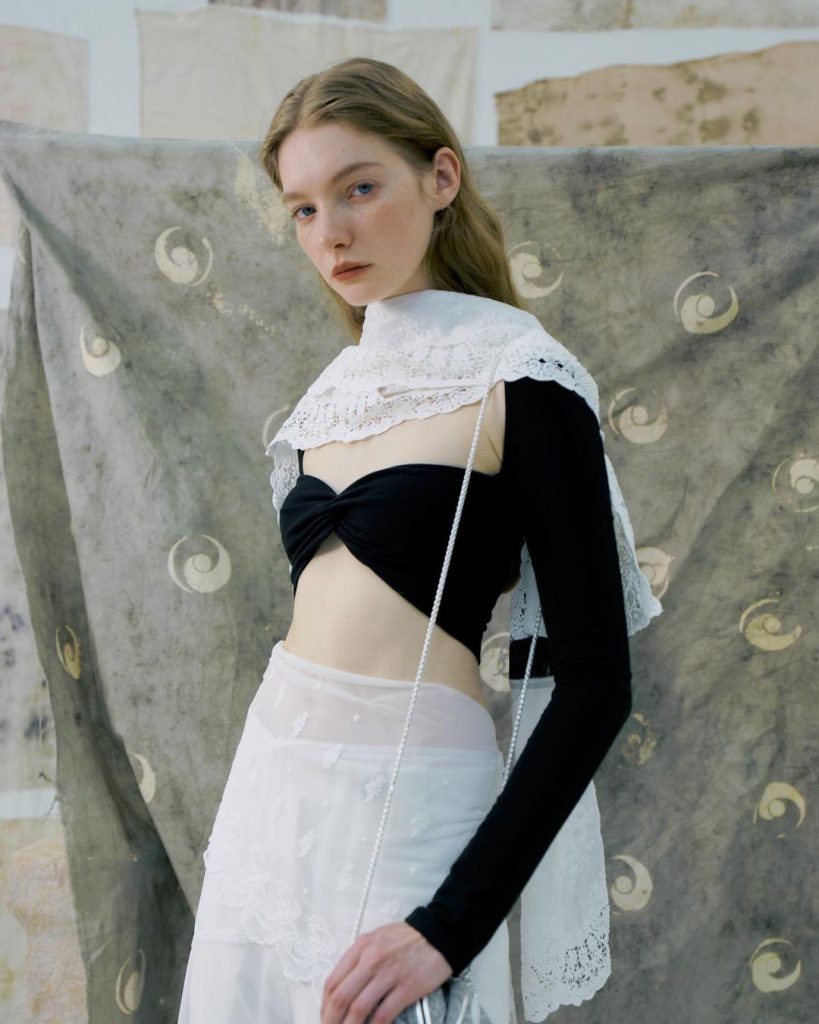
At the core of Taiwanese designer Peng Tai’s namesake label lies the very essence of balance—a concept that underpins all his creations. Since setting up his Paris‐based atelier with his wife and muse Isa Kwai, Tai has based each of his collections on a single element of nature as identified in Chinese culture, as an ode to his firm belief in the balance between nature and humans. As with the fleeting nature of seasons, Tai’s pieces are ethereal and ephemeral—raw, dainty dresses and romantically strewn smocks modelled after the elements. He started with metal for his debut collection in 2019, and four years in, he continues to look to the natural world for that creative spark.
You’re most known for your works rooted in nature and its relationship with humans. How did you get your start in fashion, and why is nature and its elements such a central part of your work as a designer?
Since my childhood, my father always dressed me up when we went out and my mother would make homewear using her sewing machine at home. I gradually became curious about clothing and how to make them. I believe that fundamentally, we’re all the same. [We may have roots in] different places, speak different languages and have different values, but [we all come from the earth]; we’re all born from Mother Nature. But most of us have forgotten the importance of our relationship with her nowadays. No matter how advanced life has become compared to the old days, we still need to keep her in our minds just like we did in the past, to balance nature and people. [This is what] motivates me to bring the fundamental elements of nature as concepts into my designs.

What have been the highlights of your career so far and what do they mean to you as a designer?
My most memorable collection to date is my label’s first collection—it was designed by myself and my wife, Isa, and was the starting point [of everything]. I feel that the journey of being a designer is a process or like a curve chart. Just like in our lives, there’ll always be highlights and a rock bottom at some point, but life still goes on.
What are the hallmarks of a Peng Tai design? What do you wish for people to take away from your work?
Personally, I think [my concepts are] quite abstract, but I’d say the different vibe and the feeling we create for every season [are hallmarks]. It’s a long‐term narrative, even though the designs are different each season. We always try to explore the possibilities of cuttings, silhouettes, treatments of fabrics as much as we can, so that each collection doesn’t have a similar outcome. I wish that when people see a design, or even a product or a dish, [they’d] hold on to [it for] a second [longer] to feel it; to look beyond its appearance and think about the vision behind it—the processes, the effort put into it, the concepts, the experiments, the stories and the ideas. I think this is so important, especially since everything nowadays is getting faster. It’s interesting to think about the why and how when you’re seeing something, because through that, you’ll find something different each time.



Can you share more about how you formulate the overarching theme for each season? What does the Peng Tai creative process typically look like?
[Everything boils down to] nature; we’re in nature and we live with nature every day. I take my inspirations from nature and translate them into pattern‐cutting and fabric treatments. I’d say I’m a “process person”. I’m more fascinated with the processing part of creation, just like how nature is always in process—you don’t always see the result directly, but over time, you’ll see it gradually. My creative process is like a circle—[just like how] we’re born and we pass, and [how] summer comes and goes, but both always leaving evidence of their existence. Revaluation [is part of my creative process as well] … sometimes, we need to look back, then move on—just like binding the timeline to a circle. Then, you can see the past shaping us and leading us into the future.
